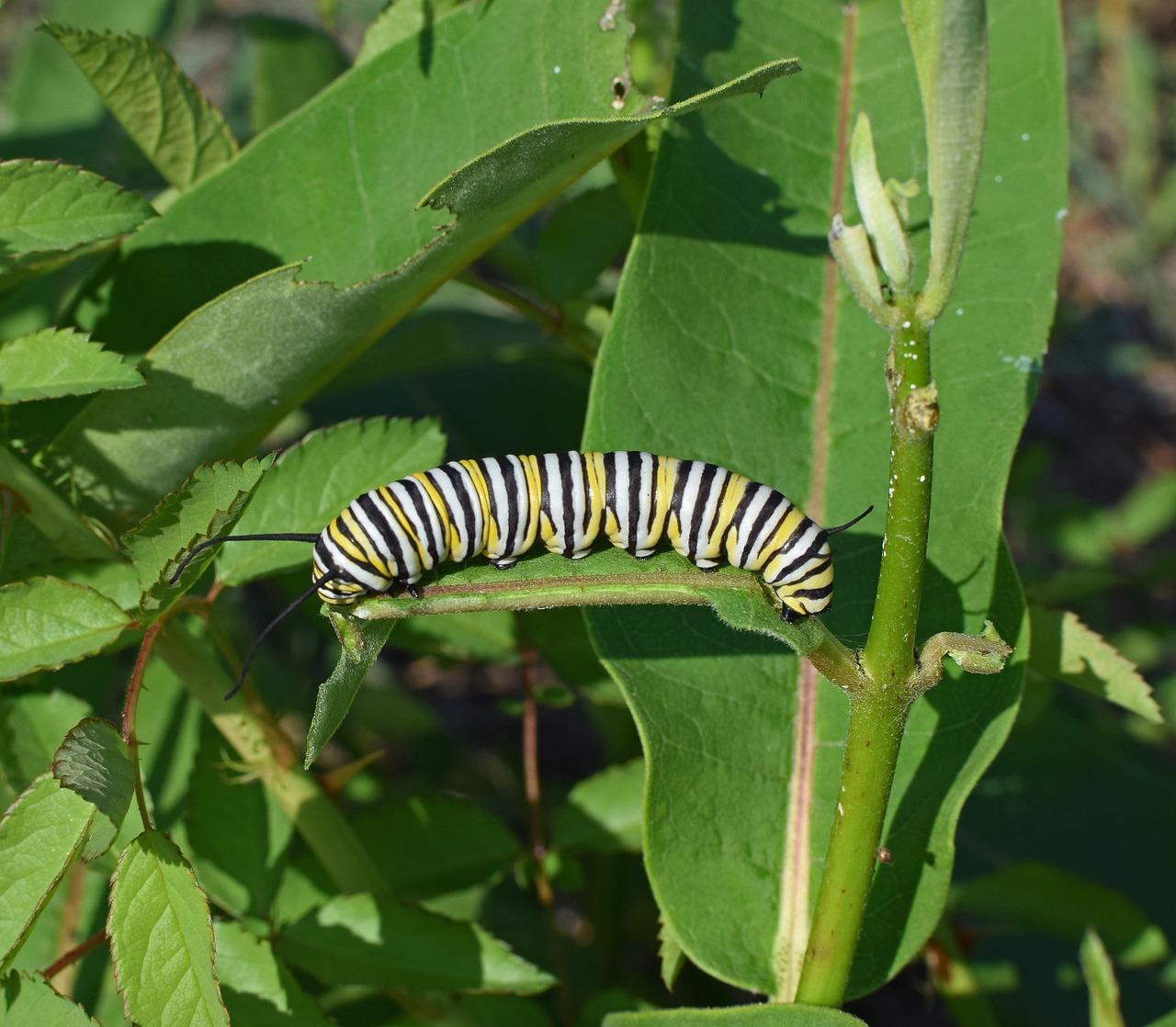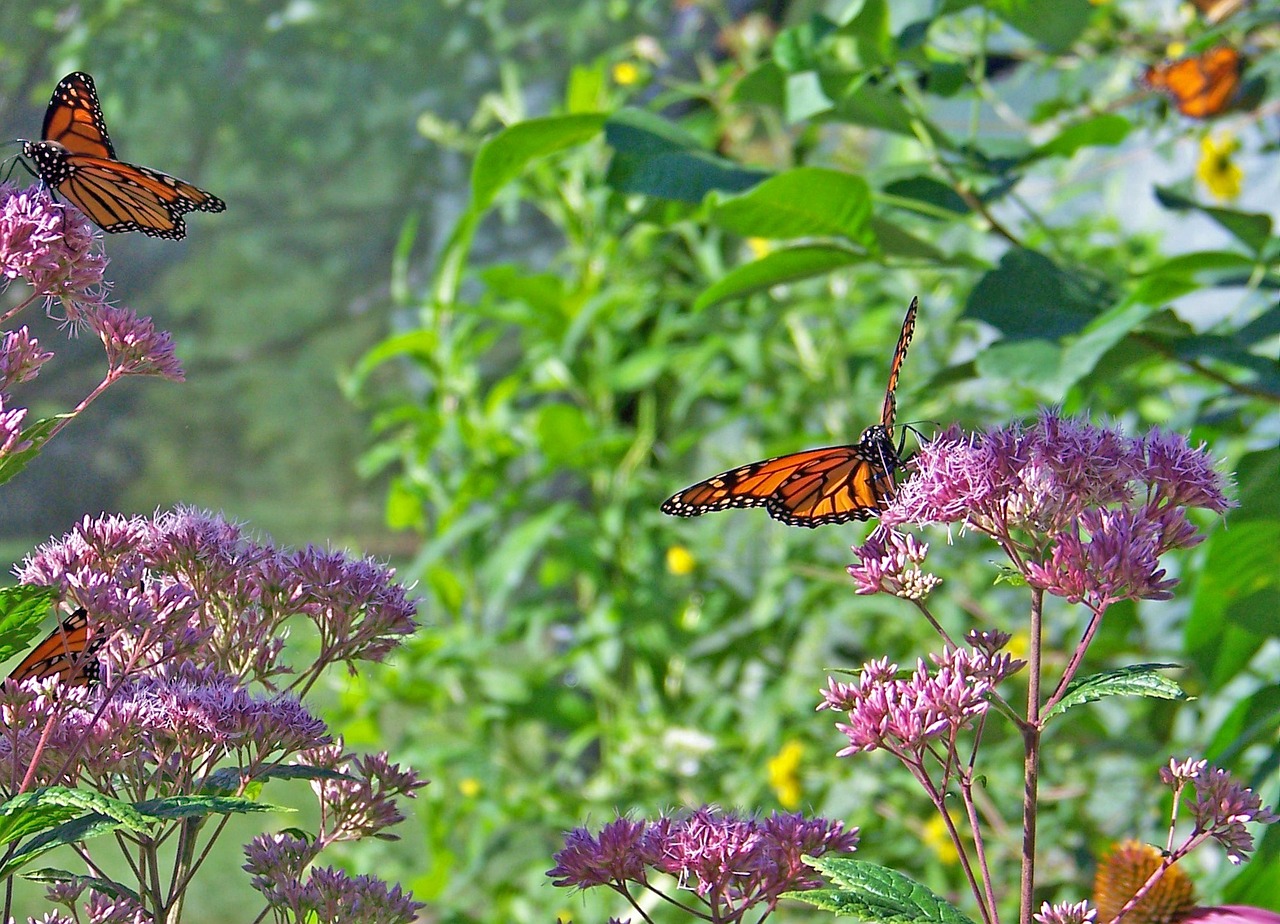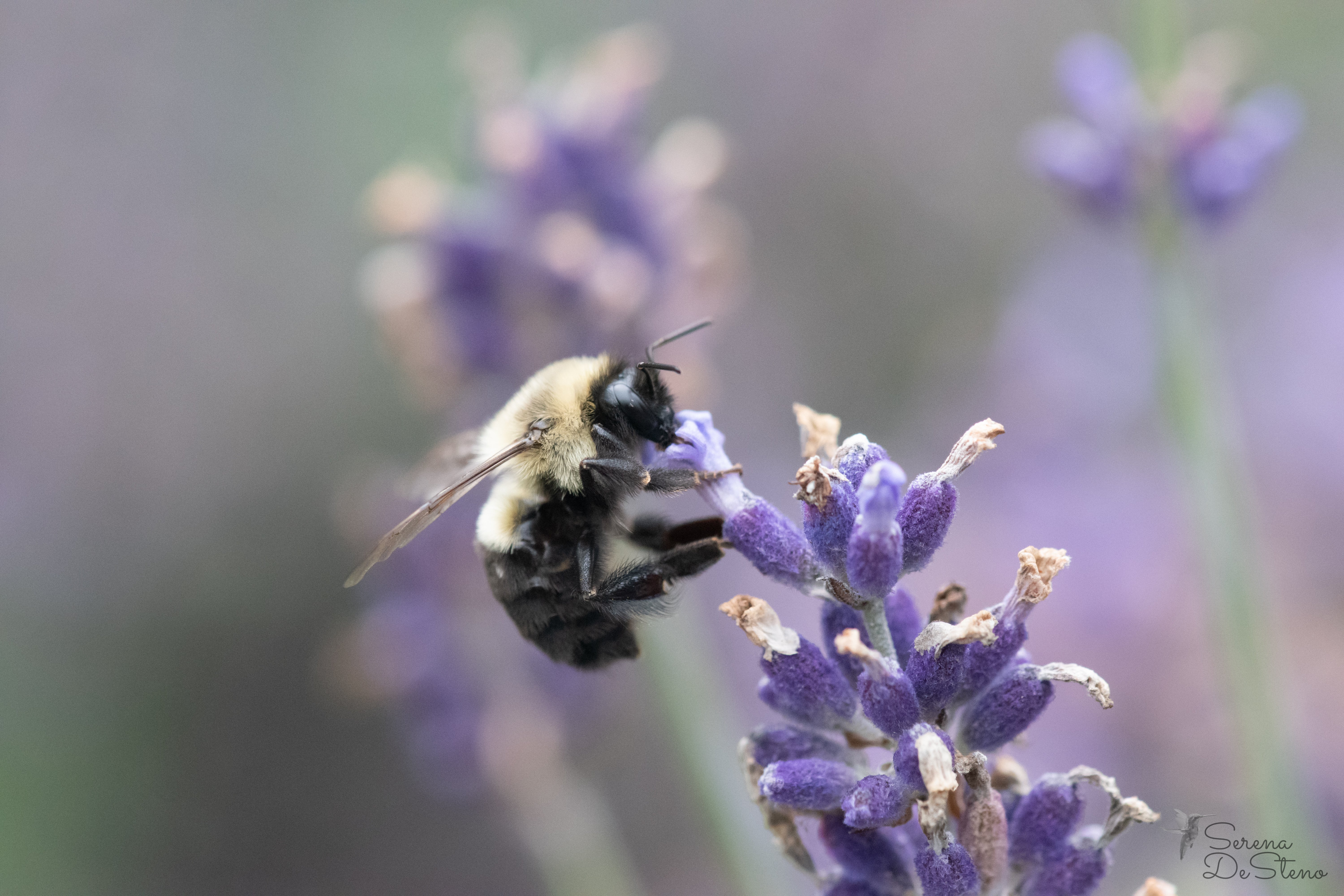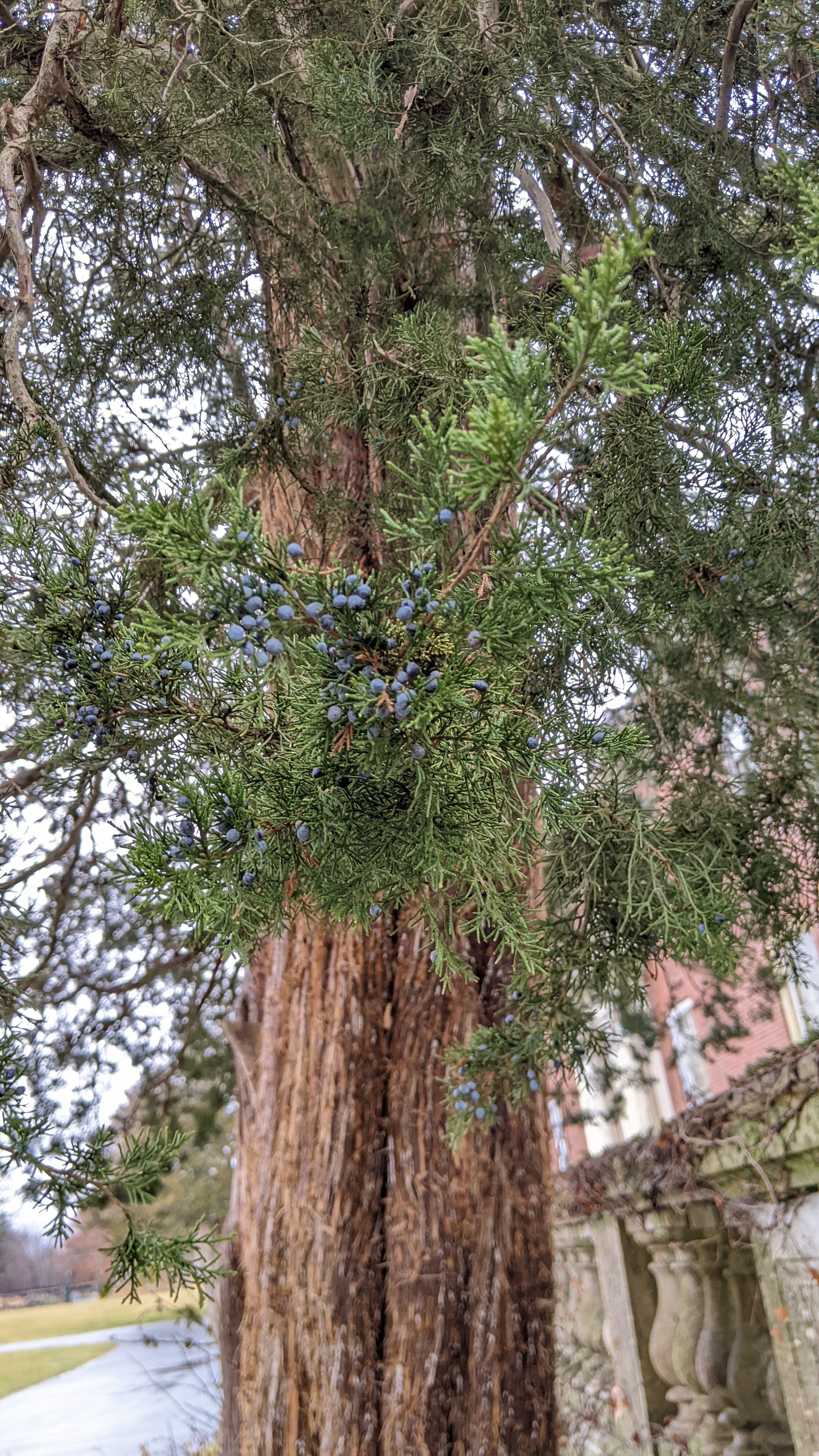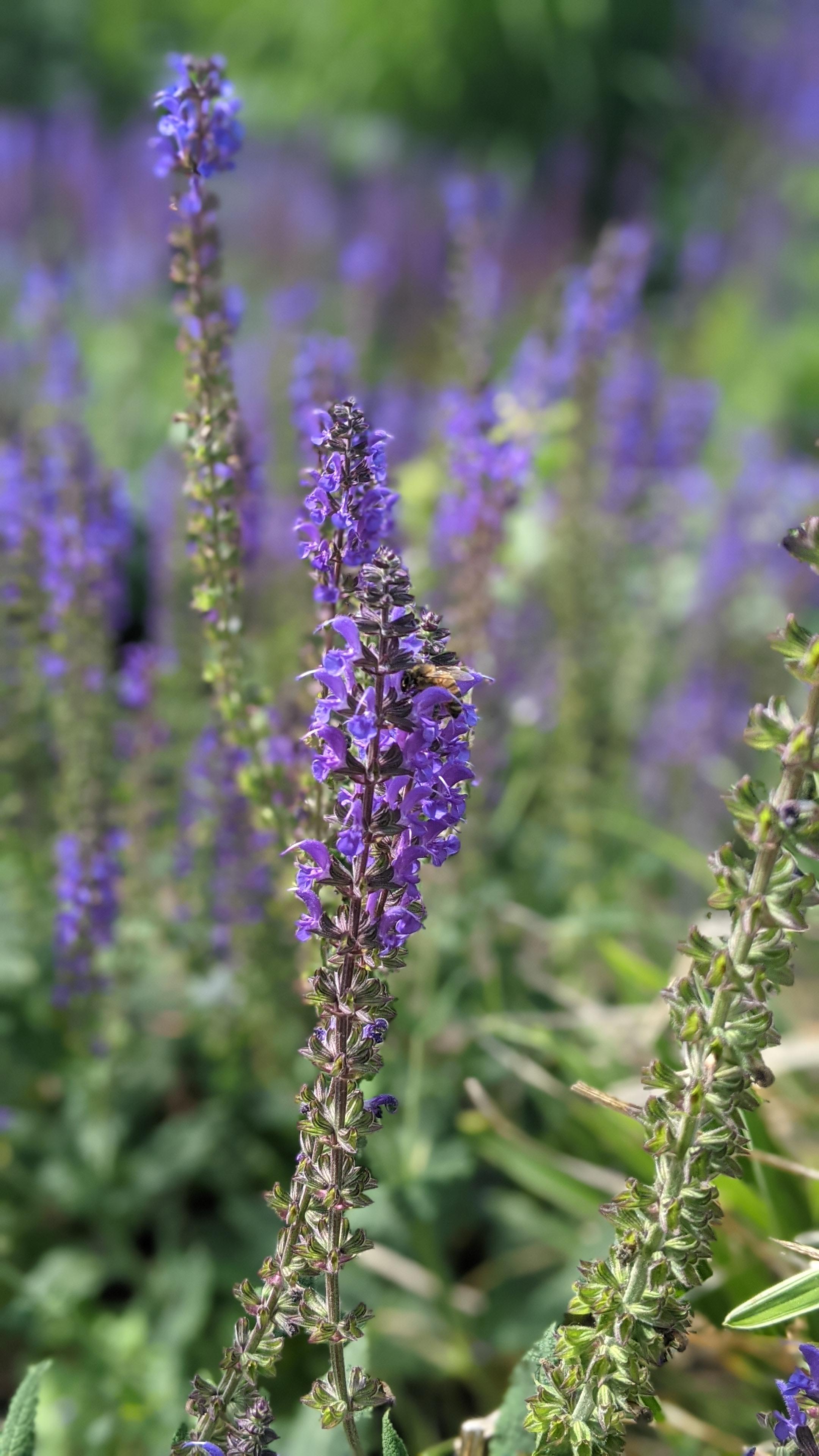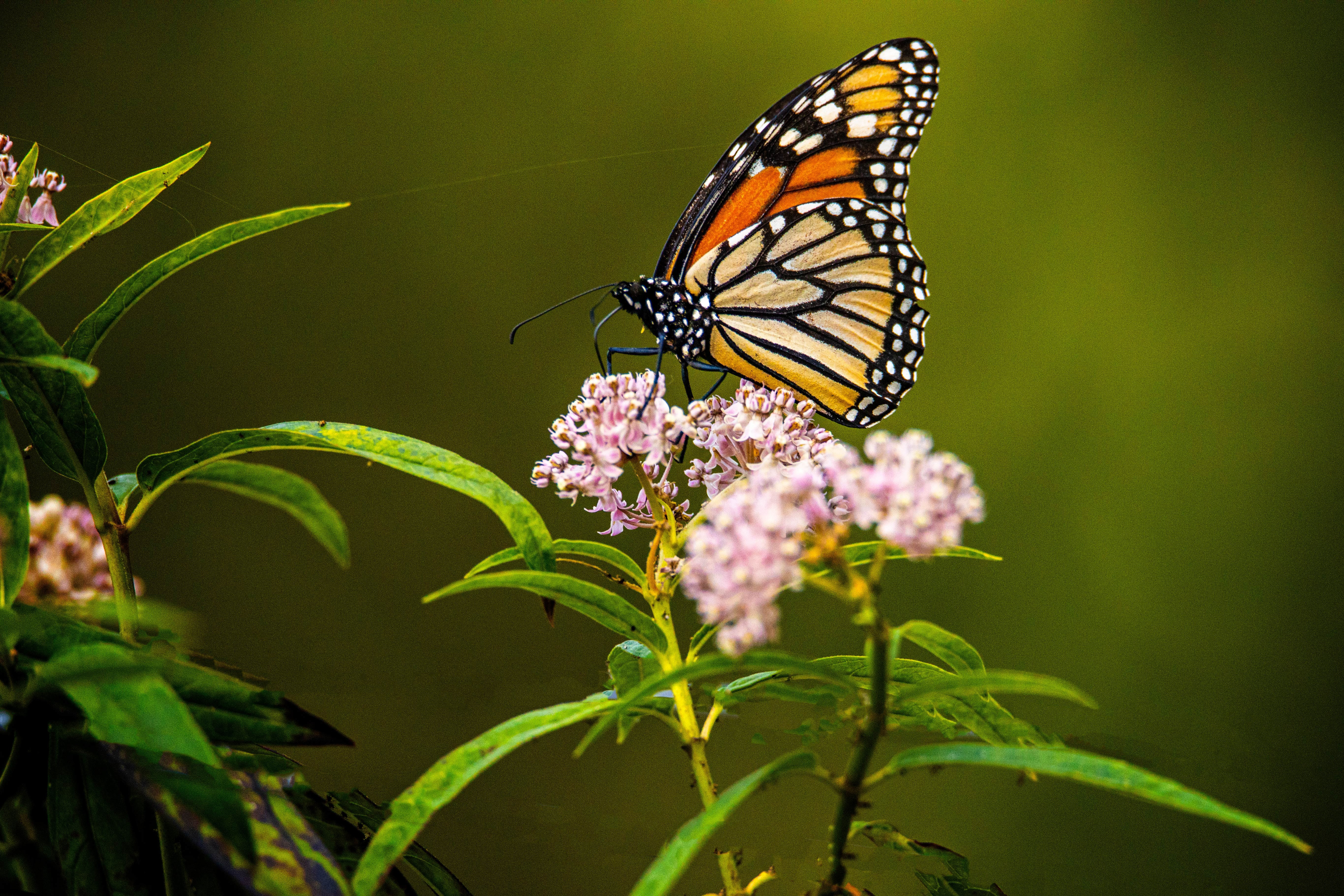
Asclepias syriaca is a member of the Asclepiadaceae family; often referred to as common milkweed. It is one of approximately 115 species of milkweed that grow through North and South America. Common milkweed (Asclepias syriaca), showy milkweed (A. speciosa) and butterfly weed (A. tuberosa) are often cultivated as ornamental garden plants used to attract butterflies in the Northeast. You can find all three types of milkweed plants growing throughout the Garden at Elm Bank.
The genus name, Asclepias, honors Asklepios, who was the ancient Greek god of medicine. Before the advent of modern medicine, common milkweed was used for medicinal purposes. Milkweed sap was used as a poison, as an emetic and diuretic, a cure for diseases of the lungs, as well as a wart remover. Syriaca, refers to ‘of Syria’ as Linnaeus's mistakenly believed common milkweed originated in Syria.

Common milkweed is a perennial (returns every year) wildflower that grows five to as much as six foot tall. It forms rhizomes and will develop clumps over time. Thick, two-tone green, paddle shaped leaves grow directly off the stout stems. If any part of the the leaves, stems, or seed pods of a milkweed plant are broken, it excludes a white stick latex sap, hence the vernacular milkweed.
Beautiful umbels (umbrella shaped clusters) of pink flowers form on the top of the stems which omit a strong, sweet scent. If pollinated, fruits (green pods) will develop from the flower heads. Inside these fruits are the seeds attached to white, fluffy, silky filaments called coma. These filaments allow the seeds to be dispersed by the wind.
In the wild, common milkweed is often seen growing by stonewalls, along fence, on roadsides, and in open fields throughout New England. Although milkweed can tolerate light shade, it grows best in full sun.
The latex sap is found in all plants of the Asclepias family (milkweed). It contains various levels of cardiac glycosides or cardenolides compounds. The strength and quantity of the chemicals do vary depending on the variety of plant. These compounds are toxic to most predators, parasites and pathogens. It serves as a defense system for the plant against various disease, insects and animal predation. Cardiac steroids are still used to treat human heart conditions and
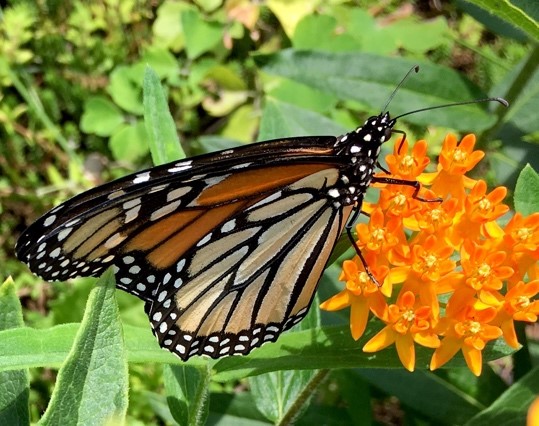
For monarch butterflies (Danaus plexippus) the cardiac glycosides become a defense. Their bodies have evolved with mutations that block the toxic effects of the plant, allowing the chemicals to acclimate in their bodies. They can store them in their tissue which renders them inedible and toxic to other animals. Female monarchs seek out and lay their eggs specifically on milkweed; the eggs hatch into caterpillars and the caterpillars eat the foliage. Birds and other butterfly predators learn to leave both the monarch butterfly and caterpillars alone.
In addition to helping Monarchs, hundreds of other insects in the New England area are known to utilize Asclepias plants for their survival. Milkweeds flowers are highly nectar rich and attract other butterflies such as Eastern tiger swallowtails, Great spangled fritillary, and Red Admirals. Bumblebees, Leaf-cutting bees and Sweat bees that are bright, iridescent metallic colors are often seen on the flower heads. The Milkweed Tiger Moth, Red Milkweed beetles, northern Longhorn beetles and Hover flies all consume the milkweed plant.
Why has the importance of milkweed come to public notice as of late? In July of 2022, monarch butterflies were placed in the classification “Endangered” by the International Union for Conservation of Nature (IUCN). According to the Center for Biological Diversity, “Monarchs east of the Rocky Mountains have declined by around 90% since the mid-1990s.” Monarchs are being threatened by habit destruction, the decline in available milkweed and our changing climate.
 Planting milkweed is one step that any individual can take to assist the survival of the monarch butterfly. Milkweed is critically important to the Monarchs survival as it is their sole host plant.
Planting milkweed is one step that any individual can take to assist the survival of the monarch butterfly. Milkweed is critically important to the Monarchs survival as it is their sole host plant.
Certainly, planting milkweed alone will not solve the issues facing Monarchs. The lack of nectar plants, climate change, habitat loss in the US and Mexico, and the wide use of herbicides and pesticides are also factors in the loss of Monarch population. Learning more and taking action on other issues affecting the plight of Monarchs will also improve the chance of their survival.
In the month of October, while supplies last, Massachusetts Horticultural Society will be distributing free packages of common milkweed seed along with instructions on how to grow them at: Garden Tails Story Time, Mondays and Wednesday’s 11-11:30am, as well as Education Station, Saturdays 10am-1pm.
Monarch Butterflies
Common Name: Monarch Butterfly
Scientific Name: Danaus plexippus
Kingdom: Animalia
Phylum: Arthropoda
Class: Insecta
Order: Lepidoptera
Family: Nymphalidae
The Eastern monarch butterfly (Danaus plexippus plexippus) has always been a very common, iconic, easy to spot butterfly that summers throughout New England as this area is part of the butterflies breading and feeding territories. They inhabit this area in the warm months to utilize their only host plant, milkweed (Asclepias sp.). Monarchs cannot survive the cold, so they migrate each year to Mexico.
Unfortunately, though, In July of 2022, monarch butterflies were placed in the classification “Endangered” by the International Union for Conservation of Nature (IUCN). According to the center for biological diversity “Monarchs east of the Rocky Mountains have declined by around 90% since the mid-1990s.” Monarchs are being threatened by habit destruction, the decline in available milkweed and climate change.
Milkweed plants are a must for monarch butterflies. Monarchs use milkweed plants as the only plant species that they lay their eggs on because of the milky sap that gives the plant its common name. The latex sap is found in all varieties of the milkweed plant family. It contains various levels of cardiac glycosides or cardenolides compounds. The strength and quantity of the chemicals do vary depending on the variety of the milkweed. These compounds are toxic to most predators, parasites and pathogens. It serves as a defense system for the plant against various disease, insects and animal predation.
A typical female monarch will mate and lay between 300-500 greenish cream-colored eggs on the underside of a milkweed leaf. In their lifetime, a single female may lay up to 1800 eggs over multiple matings, however, fewer than 10% of these eggs will survive. The eggs take from three to eight day to hatch into larvae (caterpillars).
The caterpillar will go thru five instar stages and will grow to about two inches long. It will have a distinctive pattern of white, yellow, and black transverse bands around its body and pairs of black tentacles on each end that look like horns. It is during the larvae stage that monarchs do their growing as it is the only time that they have the anatomy that will allow them to eat. The caterpillars will consume about 20 milkweed leaves, even though milkweed is poisonous to most other insects and animals. Monarch butterfly bodies have mutated and evolved to block the toxic effects of milkweed, allowing the chemicals to acclimate in their bodies. They can store them in their tissue which renders them inedible and toxic to other animals. For the monarch the cardiac glycosides now contained within their bodies become a defense system. As soon as the eggs hatch, and through their butterfly form, monarchs are aposematic; brightly colored in easily identifiable displays of contrasting colors designed to warn predators of their poisonous nature, hopefully preventing their attack.
When it's time, the caterpillars will hang from its prolegs, stubby legs that are located on their abdominal segment, and begin shedding its skin and forming its chrysalis. The chrysalis will go through many changes over the next 8-14 days. Initially the pupa appears a brilliant green color with gold spots. Before metamorphosis is completed the orange and black colors of the soon to emerge monarch butterfly is visible. The adult will enclose from the chrysalis and hang upside down. It will spend several hours here drying its wings before it will be able to fly.
The adult monarch butterfly will have two pair of bright red-orange wings surrounded by black borders and black veining with white spots. Males have an additional black spot on their hind wings. Males have a wingspan of approximately 4 inches, the females are slightly smaller. The adults will feed on a variety of nectar sources. Although monarchs will only lay their eggs on milkweed plants, they utilize nectar from a wide variety of plants. Monarchs are an important pollinator, transferring pollen between male and female flower parts during feeding, enabling fertilization and the production of seeds. Individual adults will live 2-6 weeks unless they are of the migrating population. About four generations of monarchs will exist annually.
The monarchs you are seeing at the end of September and October are members of a super generation. Their lifespan can last as long as nine months, enabling them to complete the full 2500-mile migration to Mexico. Migration is cued by shorter length of daylight, the slant of the sun, the decrease of available host plants (milkweed) and colder temperatures. The monarchs will travel from 50-100 miles each day. While they migrate, their ability to reproduce is halted. Each monarch will travel alone from their breeding and feeding territories. They will, however, gather at night to roost in trees together. A group of butterflies are called a swarm or kaleidoscope.
It will take the Eastern monarchs approximately two months to arrive in their Mexican wintering site. Much study has been completed in understanding the navigational aspects of the monarchs migration as of late. Although it is still unknown exactly how the butterflies navigate their journey, but it is believed that they use what is called a time-compensated sun compass. Monarchs calculate the angle of the sun and time of day to orient themselves. The magnetic fields of the earth are also presumed to assist the butterflies in knowing where they are.
The Eastern Monarchs will gather in large clusters in the oyamel fir forests of the Transvolcanic Range of central Mexico. This area that provides everything monarchs need for their winter survival. This region is so important to this unique migration that UNESCO, the United Nations Educational, Scientific and Cultural Organization, has declared the area a “Monarch Butterfly Biosphere Reserve”. The biosphere encompasses an area of 56,259 hectors (one hectare 2,47 acres) located approximately 65 miles northwest of Mexico City.
Come spring, as temperatures rise and daylight lengthens, the butterflies that made the migration from Eastern US and Canada will begin their journey back. Their ability to reproduce is restored and monarchs will breed, lay eggs of new generations during the journey. The members of the super generation that migrated to Mexico will never return to the US or Canada. Their travels must follow a path where milkweed is growing as it will be successive generations will continue the migration. Each generation will live 2-6 weeks so it will take 3-4 generation to complete their journey to North America.
If you are interested in assisting the monarch butterfly in their fight for survival, the best thing to do is to plant common milkweed (Asclepias syriaca) plants as this is the butterflies only host plant. Milkweed grows wild in pastures and opened fields which are becoming scarce with the human population growth in America. Stands of milkweed is also being a radiated by herbicides such as round-up by farmers and homeowners alike.
Want to learn more about Milkweed plants and Monarch butterflies?
Monarch Butterflies (USDA)
Natural Resources Conservation Service (USDA)
Monarch Butterfly and Milkweed Conservation Resources (USDA)
Growing Common Milkweed (Asclepias syriaca)
Common milkweed is a beautiful, critically important wildflower. Plants from the milkweed family and common milkweed in particular, are the only host plant for the monarch butterfly. Milkweed plants also support many other pollinators of the Northeast.
It is a perennial (returns every year) wildflower that grows five to as much as six foot tall. It forms rhizomes and will develop clumps over time. Thick, two-tone green, paddle shaped leaves grow directly off the stout stems. If any part of the the leaves, stems, or seed pods of a milkweed plant are broken, it excludes a white stick latex sap, hence the vernacular milkweed.
Beautiful umbral pink flowers form on the top of the stems from June to August which omit a strong, sweet scent.
If pollinated, fruits (green pods) will develop from the flower heads. Inside these fruits are the seeds attached to white, fluffy, silky filaments called coma. These filaments allow the seeds to be dispersed by the wind.
You can just scatter your seeds in an appropriate location- that is how it naturally happens- but, if you want your plants in a specific location or if you want to increase the odds of the seeds germinating, try being more deliberate. Bear in mind that common milkweed is a big, bold, slightly unruly plant, and it should be placed in an appropriate spot. Common milkweed however is not invasive. In the wild you will frequently see milkweed plants growing and open fields along fences and stone walls- perhaps you have a location such as that where these wildflowers can reside.
Planting your seeds outside:
- Late fall is the best time to plant milkweed seeds as milkweed seed need cold stratification- a long period of cold, before they will sprout.
- Find a site that receives six to eight hours of direct sun in average, well-drained soil.
- Prepare the site where you want to grow milkweed by removing all vegetation and obstructions such as rocks or mulch in the area.
- Make a ¼ hole with a dibber or simply use your finger up to the first joint with approximately 6” to 8” between each planted seed- it's the distance between the tip of your little finger to the tip of your index finger. Place a seed in each hole. Cover with soil. Mark the area where you planted the seeds as to not accidentally disturb the seeds or young plants. The seeds will germinate in the spring.
- If there is a period of drought in the first year, water your plants. There is no need to fertilize milkweed plants.
- Keep weeds down directly around the plants by hand-pulling.
- Do not use herbicides or pesticides or you will kill the pollinators that you are trying to help.
After the first year your milkweed plants should be self-sustaining.
Pro tips:
- Use gloves whenever you handle the plants to avoid getting the sap on your hands and thoroughly wash your hands when done.
- Do not plant milkweed plants near grazing or foraging livestock. Do know that milkweed is very bitter therefore wild animals, pets and children are unlikely to eat milkweed.
- Do not plant milkweed near other plants such as herbs or vegetables which you will be ingesting.
